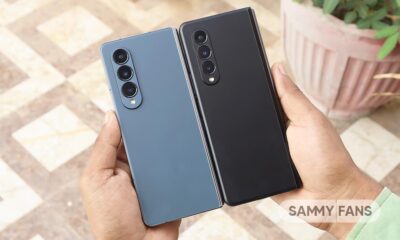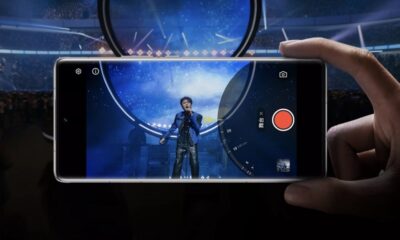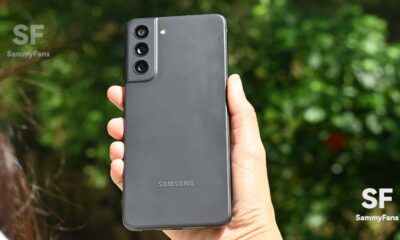Business
Samsung will join Volkswagen’s electric vehicle battery foundry in Germany

According to the latest report, Samsung SDI will participate in Volkswagen’s own electric vehicle (EV) battery foundry in Germany, the world’s largest automaker. The ‘Unified Prismatic Cell’, which was unveiled at the Power Day event on March 15.
It is unknown whether Samsung SDI will be solely responsible for the battery foundry. Guo Xuan, a Chinese battery manufacturer in which Volkswagen is the largest shareholder, is highly likely to participate. Similarly, Sweden’s Northbolt, where equity investment was made, is a candidate.
Some in the industry are interpreting whether Samsung SDI is simply subcontracting. But battery cell design doesn’t happen overnight. Tesla also entrusted the basic design of the core system-on-chip (SoC) for autonomous vehicles to Samsung.
Join Sammy Fans on Telegram
Samsung designed and manufactured it according to the specifications and functions requested by Tesla. If Volkswagen presents the specifications and functions required for the integrated prismatic battery, Samsung SDI is likely to be in charge of battery design and production.
Volkswagen promotes cost reduction and productivity improvement through integrated prismatic batteries.
The reason Samsung SDI joined hands with Volkswagen is that it helps to stably increase battery sales.

Currently, Samsung SDI’s largest electric vehicle customer is Volkswagen. It accounts for more than half of total EV battery sales 5 trillion won per year. BMW, which was the largest customer in the past, accounts for 20-30%, and other companies including Stellantis account for 20%.
Meanwhile, Volkswagen is pushing for the establishment of six battery cell factories in Europe by 2030 as a sole or joint investment. 240 gigawatt-hours (GWh). This is enough to make 3.7 million high-performance electric vehicles with a driving range of 400 km.
The integrated prismatic battery will be introduced in 2023. The goal is to reduce battery cost by up to 50% by applying it to 80% of all-electric vehicles by 2030.
Business
Samsung leads Q3 smartphone market, Huawei’s entry haunts Apple
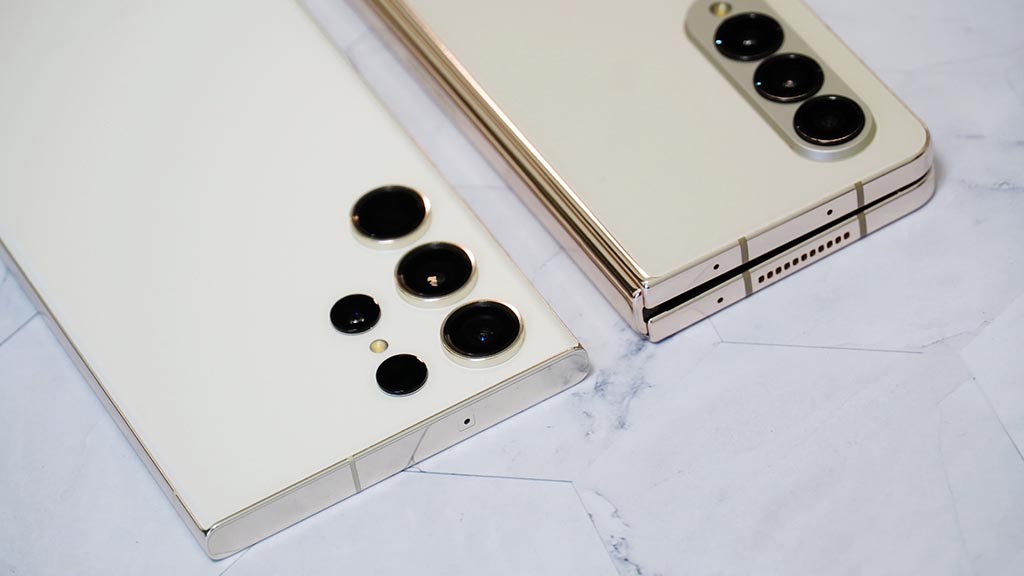
Samsung ranked first in market share in the global smartphone market in Q3, 2023. TrendForce report says that Samsung led the global Q3 smartphone market, recording a market share of 19.5%.
Overall production in the third quarter increased by 11.5% compared to the previous quarter to 60.1 million units. During the same period, Apple’s production increased by 17.9% to 49.5 million, thanks to iPhone 15.
Follow our socials → Google News | Telegram | X/Twitter | Facebook | WhatsApp
Third place was taken by Xiaomi (13.9%), followed by Oppo (12.6%) and Transion (8.6%). 6th place is Vivo (8%). Meanwhile, global smartphone production reached 308 million units, a 13% increase compared to the previous quarter and a 6.4% increase from the previous year.
Huawei’s re-entry into the flagship smartphone market targeting Apple has had a significant impact in China. Huawei is aiming to expand its high-end flagship series, focusing on the Chinese domestic market next year, so Apple “We plan to attack directly”.
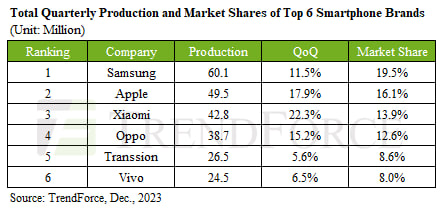
// Source
Business
Underdog phone brand jumped 50%, Samsung and Apple lost ground
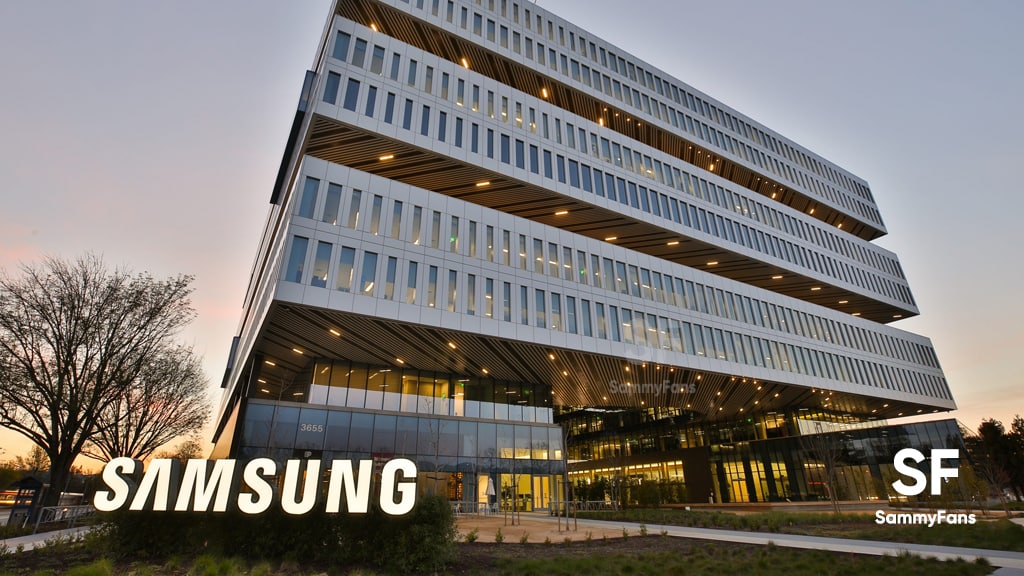
In Q3 2023, Samsung and Apple’s market share slightly declined, while an underdog Chinese phone brand appeared on the top 5 chart. In a recent development, Canalys published market research data for the third quarter, revealing Tanssion as the fifth best-seller globally.
According to the info, Samsung and Apple lead total sales with 20% and 17% market share, yet both have fallen from their 22% and 18% levels in 2022. However, Tanssion, the maker of Tecno, Itel, and Infinix phones, climbed from 6% global market share last year to 9% in 2023, a 50% jump.
Follow our socials → Google News | Telegram | X/Twitter | Facebook | WhatsApp
Apart from this, Xiaomi matched last year’s share only by “recovering” from a terrible first half of 2023. At the same time, OPPO has fallen steadily over the past two years, while fellow BBK brand vivo lost the top-5 slot it’s owned for years.
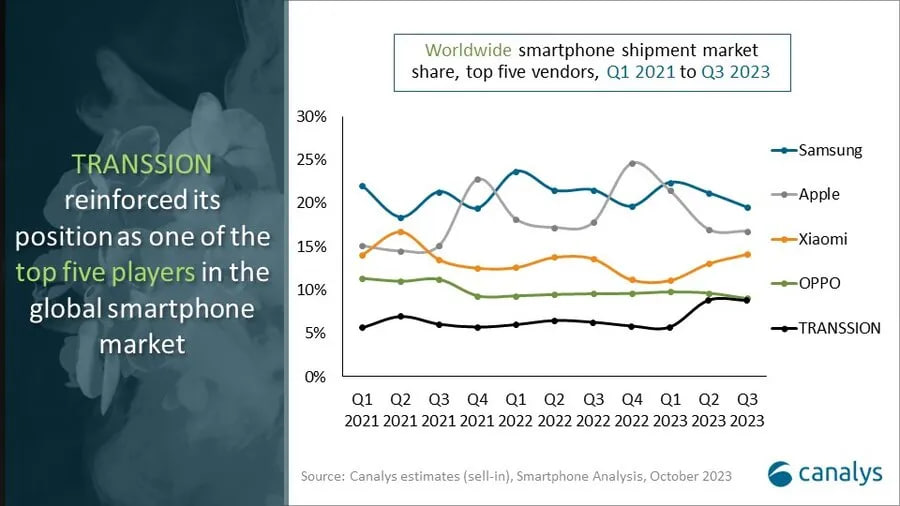
Overall, the global smartphone market underwent a slight drop of 1% in Q3 2023. Bolstered by regional recoveries and new product upgrade demand, the smartphone market recorded a double-digit sequential growth in Q3, ahead of the sales seasons.
Business
Samsung enjoyed 2023’s last victory over Apple?

Recently, research agency Counterpoint Research published their latest analysis. The report reveals that Samsung continued its leadership in the third quarter of 2023, while Apple remained in the second spot. However, both OEMs faced a decline of 1 percent year over year.
According to CR, slower consumer demand is the main factor in the dwindling sales. The market did see a slight 2 percent growth in Q3 compared to Q2, likely driven by last month’s iPhone 15 series launch. Samsung secured 20 percent market share, while Apple grabbed 16 percent sales.
Follow our socials → Google News | Telegram | X/Twitter | Facebook | WhatsApp
The Galaxy A-series was the key driver for the South Korean smartphone maker. Apple came in second with 16 percent of the market while Xiaomi rounded out the top three with its 12 percent share. Oppo (10 percent) and vivo (8 percent) were the remaining brands in the top five charts.

The newly released iPhone 15 series will help Apple score a lead over Samsung in the fourth quarter of the year. The results will arrive by early next year, and it’s expected that the US phone maker could surpass Samsung. Major camera upgrades and USB-C helped Apple register strong sales.



